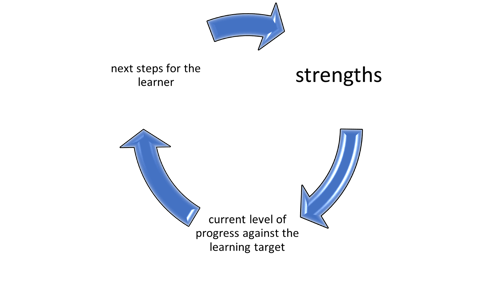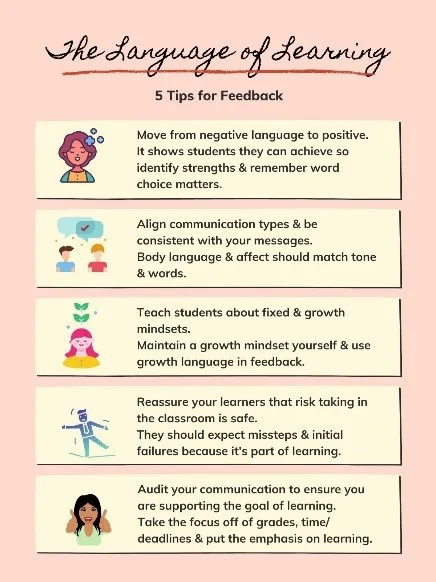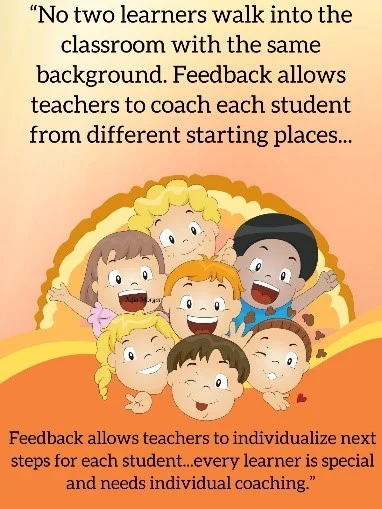
When I started writing this new course on feedback, I admit I wasn’t wickedly excited. You see, to me feedback was telling students how they did on a project, jotting a score on a test, and noting some revision comments in a writing assignment. But I was WRONG! Feedback (and coaching students using the feedback loop) can be revolutionary. The feedback loop is a simple method through which we can coach our students to learn continually. Using this method ensures personalized learning for each student and action on the part of the learner through a productive response to your feedback. This, in turn, will build student efficacy and ownership over their learning. The feedback loop encourages you to start with strengths, links your feedback to the learning target or standard, and gives the learner their next step. Want to discover more? Check out our newest course: 5139: Coaching Your Students to Action Using the Feedback Loop.
But in the meantime, here are five fantastic feedback (loop) tips to try:
1. Start to develop a language of learning in the classroom. Students, teachers, and families can increase learning just by using a common language. The infographic below provides specifics on introducing and maintaining a language of learning.

2. Consider using a personalized feedback plan for each student. Every single learner has unique strengths, interests, and needs. Individuals have different identities and cultural backgrounds that have an impact on how feedback is given, received, and processed. It’s important to honor these factors when giving feedback and coaching students.

3. Be sure to include strengths, progress toward the target, and next learning steps in your feedback.
4. Communicate and collaborate with the family of each student. Parents or guardians can better understand the feedback you give their child. Tell them about their child’s strengths, explain where they are in relation to the learning target, and provide the next steps including how the family can support learning. Families will act on the information if they are provided a roadmap.
5. Teach students to ask themselves three simple questions to guide them toward a positive response to feedback. Download our student desk cards to move your learners toward action.
- Where am I now?
- Where do I want to be?
- How do I get there?
The feedback loop will improve your teaching and your students’ learning. Now that I know that, I am excited about coaching students using the feedback loop. How about you?






